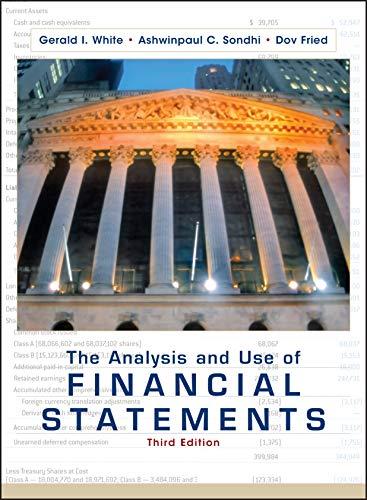3. [Cash flow: transactional analysis; CFAC adapted] The fol- lowing financial statements are from the 2001 Annual
Question:
3. [Cash flow: transactional analysis; CFAC adapted] The fol- lowing financial statements are from the 2001 Annual Report of the Niagara Company: Income Statement for Year Ended December 31, 2001 Sales Cost of goods sold Depreciation expense Sales and general expense Interest expense Income tax expense Net income $1,000 (650) (100) (100) (50) (40) $ 60 Balance Sheets at December 31, 2000 and 2001 2000 2001 Assets Cash $ 50 S 60 Accounts receivable 500 520 Inventory 750 770 Current assets $1,300 $1,350 Fixed assets (net) 500 550 Total assets $1,800 $1,9004. [Cash flow and income analysis] The financial statements of M Company and G Company for the years 1996-2000 are con- tained in Exhibit 3P-1.
a. Derive the 2000 income statement for G Company.
b. Derive the 2000 cash receipts and disbursements for M Company.
c. Conven the schedules of cash receipts and disbursements for the years 1996 through 2000 for both G Company and M Com- pany to statements of cash flows segregating the cash from op- erations, financing, and investment. Use the direct method.
d. As a bank loan officer, state which company (M or G) you would prefer to lend to. Justify your answer.
Step by Step Answer:

The Analysis And Use Of Financial Statements
ISBN: 9780471375944
3rd Edition
Authors: Gerald I. White, Ashwinpaul C. Sondhi, Haim D. Fried





